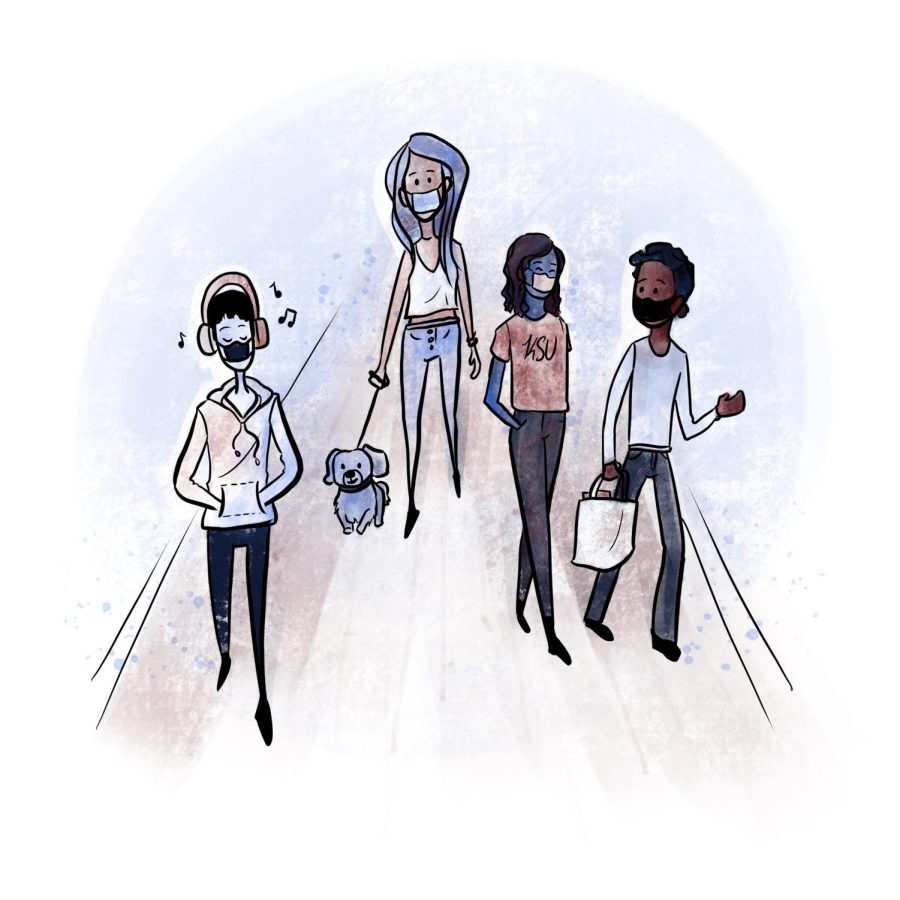Assessing COVID-19 risk levels: Campus activities ranked from low to high risk
July 1, 2020
As the fall semester approaches, worries have increased regarding the return to campus and what will be the safest approach to do so. Everyday activities, along with social events, will be affected by precautions to decrease the risk of contracting the virus for students and faculty.
Kent State professor of epidemiology Christopher Woolverton said one thing to keep in mind is that safety is seen through the lens of risk.
“In general, safety is defined by risk,” Woolverton said in an email. “Risk is defined by the likelihood of an event happening and the negative consequence of it happening.”
Conditions such as wearing a face mask and social distancing are seen as variables when evaluating the risk of these events.
“In the absence of defined variables, risk assessors use ‘worst case scenarios’ to determine what maximum safety precautions would be needed and then dial back (or not) based on actual data that define the variables,” Woolverton said.
KentWired compiled a list of 10 Kent State and local activities to be evaluated, and Woolverton analyzed their safety and ranked the risk of COVID-19 from low to high for each activity. These activities are not listed in any particular order.
-
Walking down the crowded esplanade: Low Risk
The esplanade is one of the most populated areas on campus. Filled with students walking to and from class, the esplanade intersects through popular locations like Bowman Hall, the Stopher-Johnson Honors Complex and Starbucks.
Students will be coming in contact with others every day, but in order to avoid higher risk, Woolverton suggests wearing a face mask and avoiding contact with others longer than 15 minutes.
-
Eating in the student center: Low to Medium Risk
The student center is another highly populated area on campus, hosting hundreds of students every day between the eating facilities, bookstore and other offices in the building.
These areas will be regularly cleaned, but once again, wearing a face mask is crucial. Since wearing a facial covering decreases the risk of spreading the virus, Woolverton encourages eating and then re-covering your face as soon as you’re done.
-
Eating inside a restaurant (compared to outside): Low to Medium Risk
The risk level is increased both inside and in crowded places, including places like restaurants in downtown Kent. If you are planning to return downtown for a night out, Woolverton again stressed the importance of eating then re-covering your face.
“The lowest risk would be to wear a face cover when not eating and keep six feet of empty space between you and others,” Woolverton said. “Risk increases if the face cover is removed, and increased more if close interaction with other non-masked people at less than six feet occurs for more than 15 minutes.”
-
Hanging out in a friend’s dorm: Low to Medium Risk
If you are looking forward to seeing friends on campus next semester, the safest method to do so is to wear a face mask and distance yourself six feet apart from others.
Woolverton also encourages having extra hand sanitizer to make sure the room, and the people entering, are clean to avoid the spread of germs.
-
Riding the PARTA bus: Low to Medium Risk
Riding the PARTA bus is essential to many commuters and students on campus to travel between classes. To prevent a higher risk of spreading the virus, Woolverton said to wear a mask and ensure social distancing between yourself and others on the bus.
-
Using the lounge areas in your dorm: Low to Medium Risk
For those late-night hangouts and study sessions, dorm lounge areas will still be open for student use. These areas will be cleaned frequently, but Woolverton still encourages masks and social distancing. Also, make sure to sanitize the area you are using before and after you sit down.
-
Studying in the library: Low to Medium Risk
Yet another location on campus students rely on for academic success and resources, the library will be frequently cleaned to ensure student safety.
If you are meeting for a study group, face masks, social distancing, hand sanitizing and cleaning the space in use is highly encouraged.
-
Going to the bars: Medium to High Risk
Similar to eating out, the eat/drink and re-cover method is encouraged for students going out on the weekends.
Going to bars gets riskier due to the crowded space and possible encounters with others that are not wearing a mask, along with “intoxication as inhibitions decline,” Woolverton said.
-
Going to frat houses/parties: Medium to High Risk
“Parties imply close interactions and drinking,” Woolverton said. “Drinking means mask removal.”
This cautions the same warnings as going to the bars.
-
Communal Bathrooms in dorms: Medium to High Risk
Woolverton said this is the most taxing evaluation due to the inability to assess how many people will be in and out at a time.
Students rely on the communal bathrooms multiple times a day and will more than likely come in contact with someone else when in use. These places will be frequently cleaned on a regular schedule to prevent as little spread as possible.
Contact Kelsey Paulus at [email protected].









